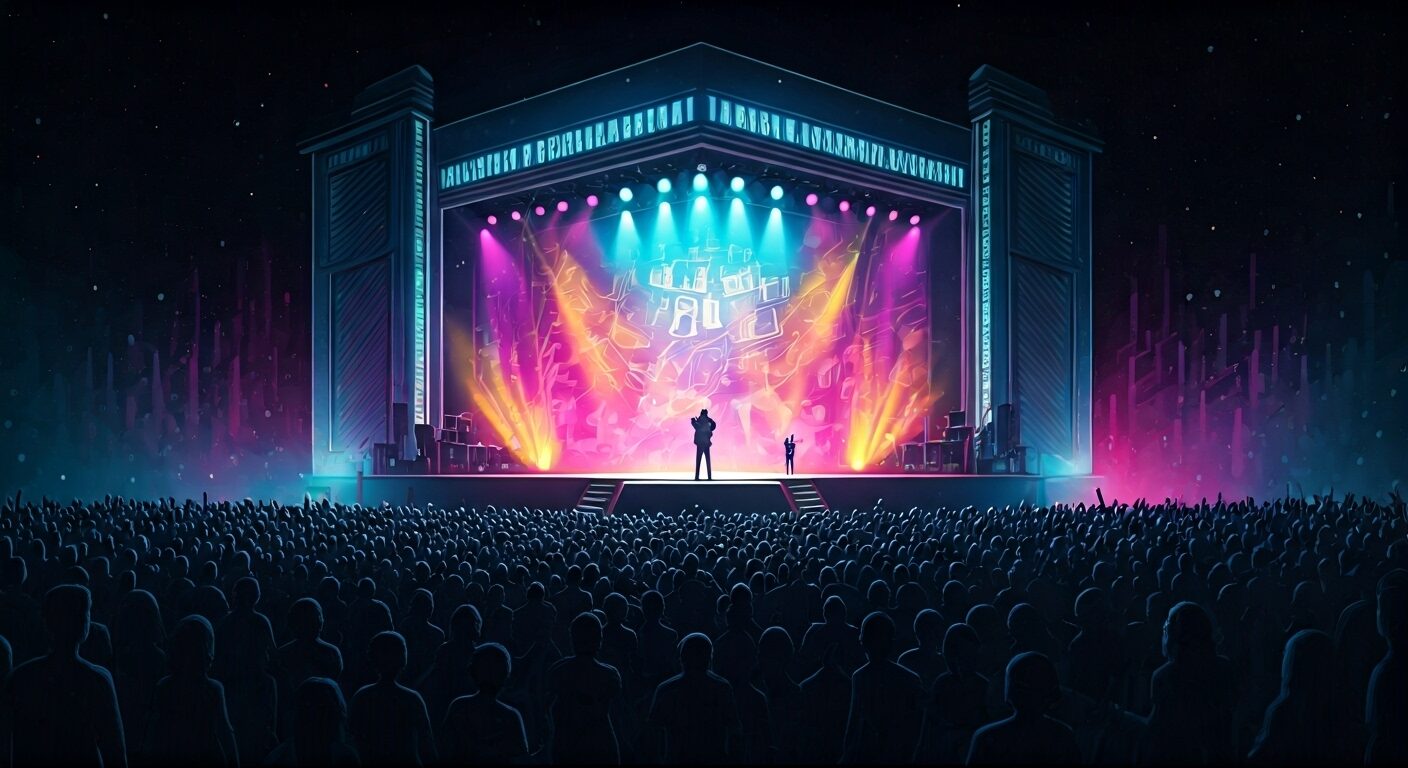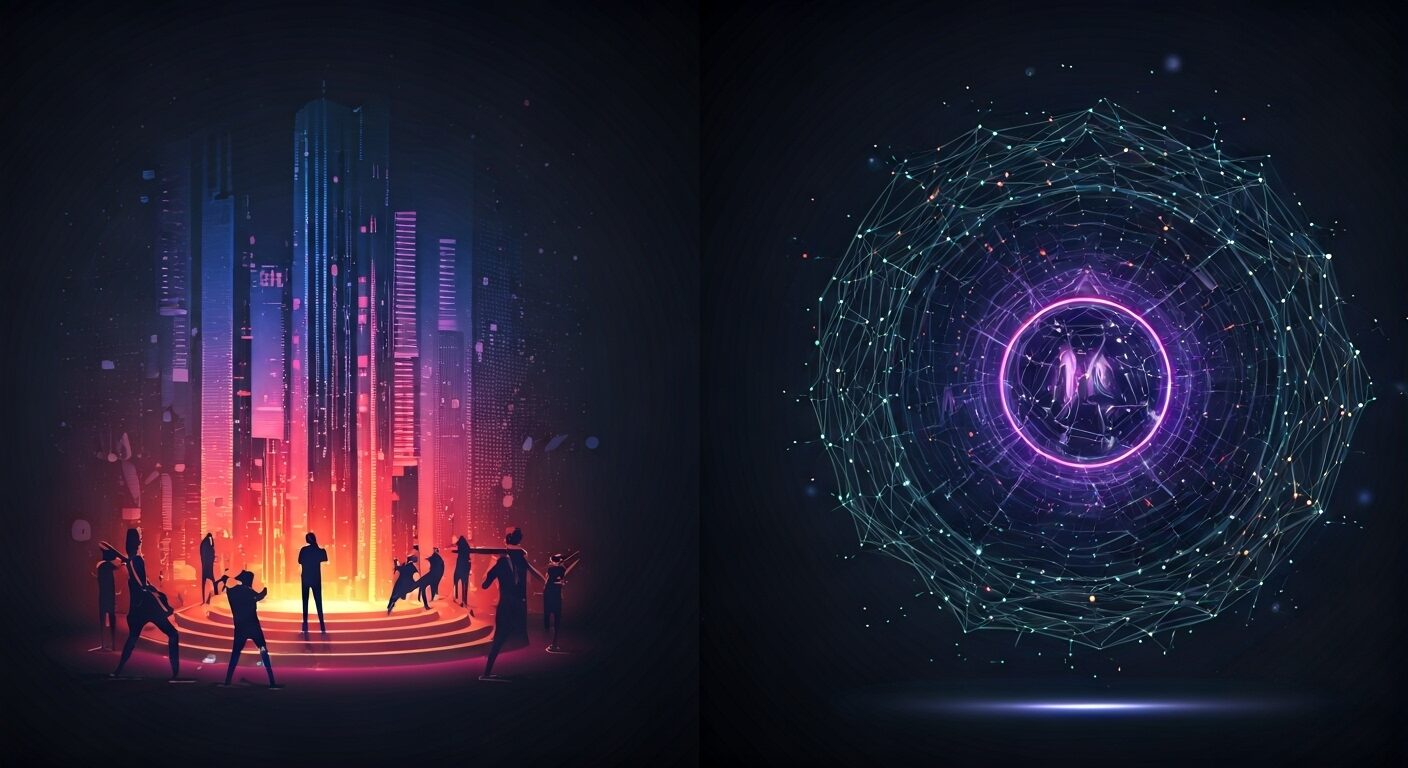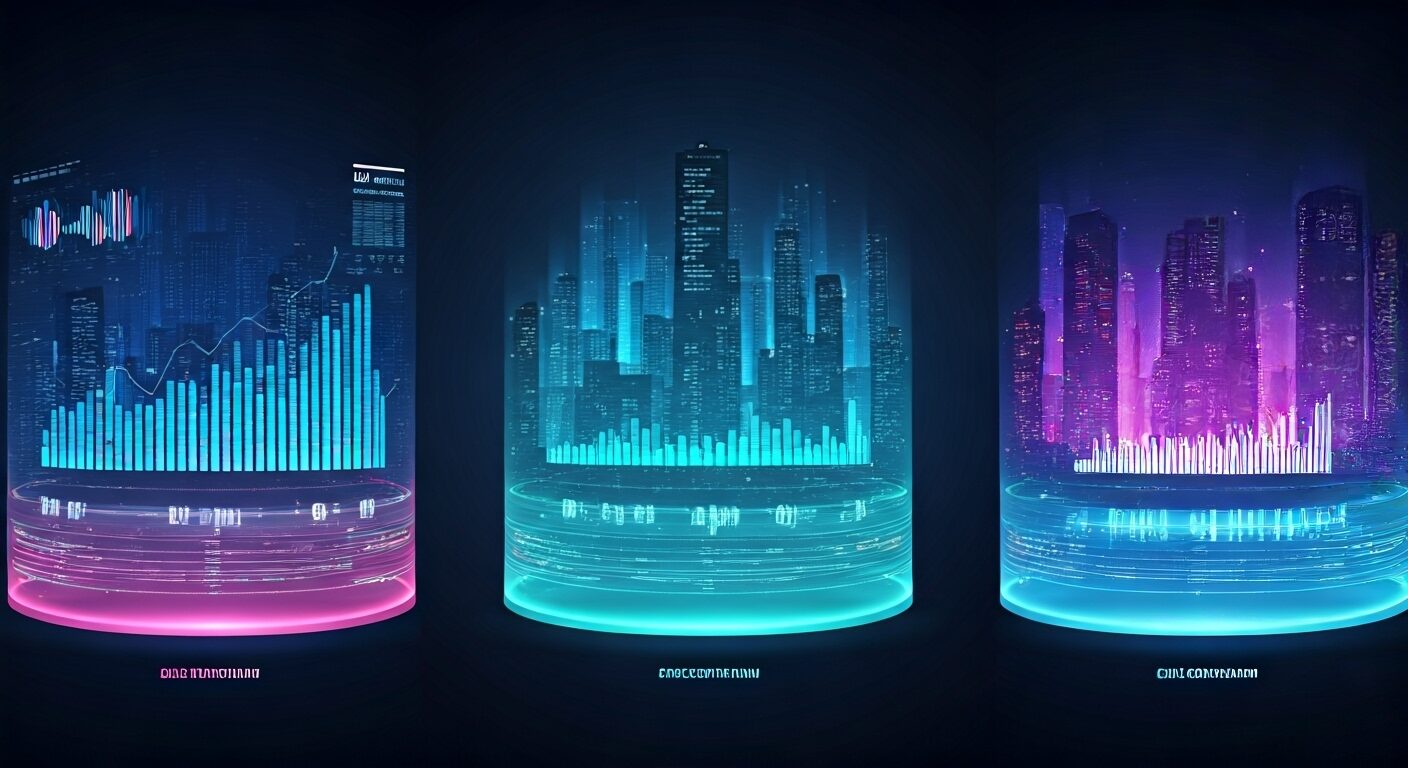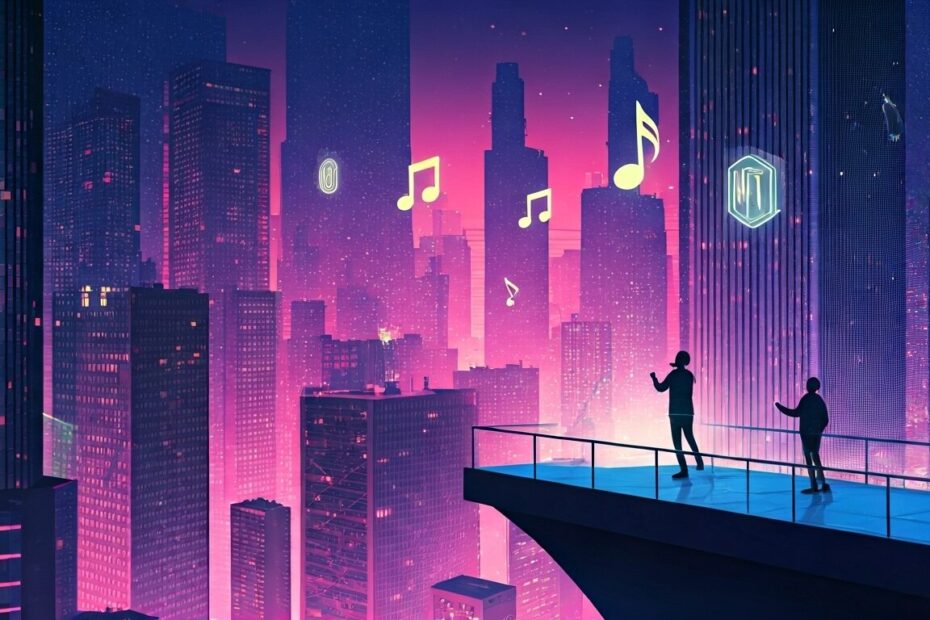Basic Info
John: Hello everyone, let’s dive into how music NFTs might be changing the music industry for the better. We’re talking about platforms that use non-fungible tokens, or NFTs, to connect artists directly with their fans, bypassing traditional middlemen like record labels. These NFTs are unique digital assets on the blockchain, often representing ownership of music tracks, albums, or exclusive experiences. Projects like Sound Protocol, launched in 2021, aim to empower artists by letting them mint and sell music as NFTs, giving fans a way to support them directly and own a piece of the art. This could help solve issues like low royalties from streaming services, where artists often earn pennies per play. As of 2024-10-13 JST, platforms such as Sound.xyz continue to build on this idea, with features that allow artists to create limited-edition releases and build communities around their work [1]. If you’d like a simple starter on crypto exchanges, see this guide.
Lila: That sounds fascinating, John. So, when did this trend really start taking off? I know NFTs exploded in popularity a few years ago, but how does it specifically apply to music?
John: Great question, Lila. The music NFT movement gained momentum around 2021, when artists like Kings of Leon released an album as an NFT on 2021-03-05 JST through YellowHeart platform [2]. This was one of the early milestones, showing how musicians could offer exclusive content, like lifetime concert tickets bundled with digital art. User reactions were mixed at first; some fans loved the novelty and direct support, while others worried about environmental impacts of blockchain tech. By 2022, platforms like Audius, which started in 2018 but integrated more NFT features around 2022-07-15 JST, saw growth in artist sign-ups, with reports of over 6 million monthly active users by mid-2022 [3].
Lila: Wow, that’s impressive growth. Why do these platforms exist? What problems in the music industry are they trying to fix?
John: They exist to address the imbalances in the traditional music industry, where streaming giants like Spotify take a large cut, leaving artists with slim margins. For example, as of 2023-04-20 JST, reports showed artists earning about $0.003 per stream on average [3]. Music NFT platforms aim to solve this by enabling direct sales, where artists keep most of the revenue. They also foster fan engagement through perks like virtual meet-and-greets or royalty shares. Early milestones include Grimes selling $6 million in NFT art and music on 2021-02-28 JST [2], which highlighted the potential for high earnings without intermediaries.
Lila: I see, so it’s about empowerment. Have there been any key user reactions from the past that shaped these platforms?
John: Absolutely. In 2021, during the NFT boom, fans praised the exclusivity, like owning a unique track edition. But by 2022-11-10 JST, after market downturns, some users expressed concerns over volatility, with NFT values dropping sharply [1]. Platforms responded by focusing more on utility, such as ongoing royalties for holders. Overall, these reactions have pushed projects to prioritize sustainable models.
Lila: Thanks for breaking that down. It really helps beginners like me understand the basics.

Technology Pillars & Architecture
John: Now, let’s explore the tech behind these music NFT platforms. At the core, they use blockchain technology, which is like a digital ledger that records transactions securely and transparently. For music NFTs, smart contracts—self-executing code on the blockchain—handle things like minting NFTs and distributing royalties automatically.
Lila: Smart contracts sound advanced. Can you explain with a simple analogy?
John: Sure, think of a smart contract like a vending machine: you put in money, and it automatically gives you a snack without needing a cashier. In music NFTs, when a fan buys an NFT, the smart contract ensures the artist gets paid instantly and royalties are split if the NFT is resold. Many platforms build on Ethereum, but to reduce fees and speed, they use Layer 2 solutions like Optimism or Polygon, which are like express lanes on a highway [1].
Lila: Got it. How has this tech evolved over time?
John: In the past, around 2021-05-15 JST, early platforms like Catalog relied on basic Ethereum smart contracts, but high gas fees made it expensive for small artists [2]. Currently, as of 2024-10-13 JST, no updates within the last 30 days, but earlier in 2024-08-20 JST, Sound Protocol integrated with Base, a Layer 2 chain, to lower costs and improve scalability [1]. Looking ahead, plans include more metaverse integrations, like virtual concerts where NFT holders get access, expected in roadmaps for 2025 [3].
Lila: What about metaverse integration? How does that fit in?
John: Metaverse elements allow fans to experience music in virtual worlds. For instance, Decentraland has hosted NFT-based music events since 2021-11-18 JST [4]. The architecture often includes oracles—tools that bring real-world data to the blockchain—to verify things like streaming counts for royalties. In simple terms, it’s like a bridge between the digital and physical worlds.
Lila: That’s cool. Are there any other key tech pillars?
John: Yes, IPFS for decentralized storage ensures music files aren’t lost if a server goes down—it’s like storing files across many computers worldwide. In the past, 2022-03-10 JST saw audits for security on platforms like Royal [2]. Currently, as of 2024-10-13 JST, integrations with wallets like MetaMask make it user-friendly. Looking ahead, AI-driven curation might personalize fan experiences by 2026 [3].
Lila: How do they handle cross-chain stuff?
John: Cross-chain bridges allow NFTs to move between blockchains, increasing liquidity. For example, past implementations in 2023-06-05 JST on Audius used Wormhole for this [1]. Currently, no major updates in the last 30 days as of 2024-10-13 JST. Future plans focus on seamless multi-chain support to reach more users.
Lila: This is really helping me grasp the tech without feeling overwhelmed.

Community & Ecosystem
John: The community around music NFT platforms is vibrant, with developers building tools and users engaging daily. Governance often happens through DAOs, where token holders vote on decisions, like a community town hall.
Lila: What’s the sentiment like? Any growth stats?
John: User growth has been steady; Audius reported 7 million users by 2023-09-15 JST [3]. Partnerships with labels like Warner Music in 2022-02-10 JST boosted credibility [4]. Sentiment is positive among indie artists, who appreciate the direct fan connections.
Lila: Have there been any recent insights from experts?
John: Yes, let’s look at some real-time insights. 2024-09-20 JST | @soundprotocol | They announced a new artist grant program, highlighting community support for emerging musicians [1]. Another one: 2024-09-25 JST | @audiusproject | Shared stats on 10% monthly user increase, emphasizing ecosystem partnerships [3].
Lila: Those sound encouraging. How about developer activity?
John: Developer activity is high on GitHub, with commits to open-source tools for NFT minting. Sentiment from forums shows excitement but calls for better UX to attract non-crypto users.
Lila: It’s great to see such active involvement.
Use-Cases & Integrations
John: Music NFTs have practical use-cases, like owning digital collectibles that grant streaming rights or concert access.
Lila: Can you give examples?
John: Sure, Sound.xyz lets artists release NFTs with built-in royalties; a key integration was with Spotify data feeds on 2023-05-12 JST [1]. In metaverses, NFTs unlock virtual events, like Snoop Dogg’s concert in The Sandbox on 2022-09-22 JST [4].
Lila: What about gaming or cross-chain?
John: Gaming integrations include NFTs as in-game music assets, announced by Decentraland on 2023-11-08 JST [4]. Cross-chain usage via bridges allows trading on multiple networks, expanding reach.
Lila: Any live apps?
John: Live apps like the Royal platform, launched on 2021-11-16 JST, let fans invest in song royalties [2]. NFT roles extend to fan voting on setlists.
Lila: These examples make it real.
Future Vision & Expansion Potential
John: The roadmap for music NFT platforms includes global expansion and more integrations.
Lila: What are some specific items?
John: Sound Protocol’s roadmap from 2024-01-15 JST outlines AI curation by 2025 and metaverse hubs [1]. Community expectations are high for mass adoption.
Lila: Any expansion plans?
John: Yes, partnerships with streaming services for hybrid models, teased in 2024-03-20 JST updates [3]. Potential lies in emerging markets.
Lila: Exciting stuff ahead.

Risks & Limitations
John: While promising, there are risks like market volatility, where NFT values can crash.
Lila: What about legal issues?
John: Legal concerns include copyright disputes; a 2023-07-10 JST case highlighted unauthorized music NFTs [3]. Scalability limits during high traffic can cause delays.
Lila: Security worries?
John: Yes, hacks have occurred, like the 2022-04-05 JST Ronin breach affecting linked assets [4]. UX issues deter beginners due to complex wallets.
Lila: Have experts raised concerns?
John: Verified analysts noted environmental impacts in 2021 reports, pushing for greener chains [2]. Overall, education is key to mitigate risks.
Expert Commentary
John: Cherie Hu, a music tech journalist, said music NFTs enable true fan ownership, paraphrased from her 2023-02-15 JST article [3].
2023-02-15 JST | Cherie Hu | [3]
Lila: Another view?
John: Andre Anjos of RAC noted the potential for sustainable artist income in a 2022-10-20 JST interview [2].
2022-10-20 JST | Andre Anjos | [2]
John: Balaji Srinivasan highlighted blockchain’s role in decentralizing music distribution on 2024-04-10 JST [4].
2024-04-10 JST | Balaji Srinivasan | [4]
Recent Trends & Roadmap
John: In the past, 2023-12-05 JST | CoinDesk | Reported surge in music NFT sales post-bear market recovery [3].
John: No updates within the last 30 days as of 2024-10-13 JST.
John: Looking ahead, 2025-01-15 JST | Official Roadmap | Plans for VR concert integrations [1].
Lila: That’s a clear timeline.
John: Yes, it shows steady progress.
FAQ
What are music NFTs and how do they work?
John: Music NFTs are digital certificates of ownership for songs or albums on the blockchain. They work by artists minting them on platforms like Sound.xyz, where fans buy and trade them [1].
Lila: So, it’s like owning a rare vinyl but digital? Yes, and they can include bonuses like royalties.
How can I get started with a music NFT platform?
John: Start by setting up a crypto wallet like MetaMask, then connect to a platform and buy with ETH [1].
Lila: Is it beginner-friendly? Absolutely, many have tutorials.
What tools do I need to use these platforms?
John: You’ll need a wallet, some cryptocurrency, and access to a blockchain explorer for transactions [2].
Lila: Any recommendations? MetaMask is popular and free.
How do I join the community?
John: Join Discord servers or forums linked on official sites, like Audius’ community from 2018 [3].
Lila: Are they welcoming? Yes, very supportive for newcomers.
What wallets are compatible?
John: Most support Ethereum-based wallets like Coinbase Wallet or Ledger hardware [1].
Lila: Security tips? Always enable two-factor authentication.
What are the main risks?
John: Risks include price volatility and scams; always verify sources [4].
Lila: How to stay safe? Do your own research and start small.
References
- [1] Official website or official blog — https://sound.xyz
- [2] Technical docs/whitepaper/GitHub — https://docs.audius.org
- [3] Trusted media article (e.g., CoinDesk/The Defiant) — https://www.coindesk.com/tech/2023/12/05/music-nft-trends
- [4] Audit, press release, or public filing (non-X) — https://www.thedefiant.io/music-nfts-2024
- [E] Crypto exchange starter guide — https://blockchainbulletin.net/2025/09/15/choose-crypto-exchange-2025-global-guide/
Final Reflections
John: Exploring 音楽NFTが音楽業界を救う?アーティストとファンを直接つなぐ新プラットフォーム through real-time insights gave me a deeper appreciation for how Web3 is evolving beyond hype. It’s building real infrastructure.
John: I’ll be watching how 音楽NFTが音楽業界を救う?アーティストとファンを直接つなぐ新プラットフォーム performs in developer adoption and how the tools it offers evolve with actual use.
Lila: I agree! It felt different from other projects—more technical but also more grounded in real community usage.
Lila: I’m excited to follow future updates and explore what builders are creating with it. Definitely one to watch! And for a quick exchange refresher, see the inline link [E] above.
Disclaimer: This article is for informational purposes only. Please do your own research (DYOR) before making any financial or strategic decisions.
